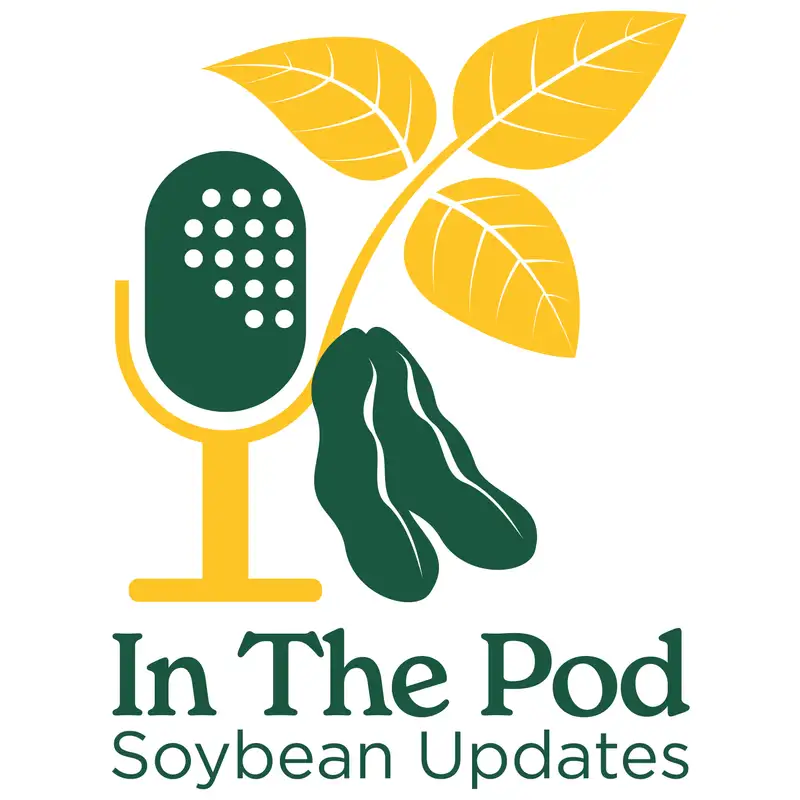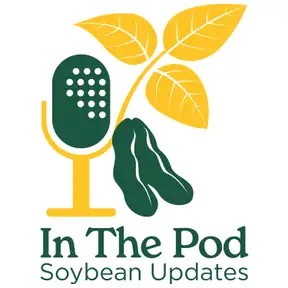04/17/25 Soybean Insights for Riding the Market Rollercoaster
You're listening to in the pod, soybean updates, a weekly trek into the latest soybean information from NDSU Extension. With all of the uncertainty in the market, when should you sell your soybeans and at what price? Frayne Olson, NDSU Extension crops economist, adds some perspective. Frayne, what's the most common question farmers are asking?
Frayne Olson:The most common question is given all of the uncertainty and rapid changes going on within US trade policy and tariffs and tariff structures, how do we try and make a decision? Not only about selling the old crop, the crop that's in the bin, but also about trying to market and sell some of the new crop. So how do we keep up with it all? How do we try and make smart decisions within this kind of environment? Mainly because there is this huge volatility. Seems like every minute something's changing.
Bruce Sundeen:And how do you answer that?
Frayne Olson:Yeah. Well, the answer is there are some strategies that we can use. First, have to recognize that as a farm manager, you're not fast enough to chase the market. There's just no way that you're gonna be able to keep up with everything and respond or react fast enough. So that really means that you need to get ahead of it, that you need to be very proactive in your marketing strategy. And what I have been suggesting is that you sit down, you go through the math, you try and say, okay, at what price would I be willing to sell more? And that can be from based on your cost of production for the new crop, the stuff that hasn't been planted yet. It could be what your storage costs are and what you think you need for your cash flow purposes and to get your bins cleaned out for old crop. K. Figure out what that price is, and then work with your local elevator, work with a processor like an ethanol plant or a crushing plant, or even work with a broker, commodity broker if you wanna do that. But put the order in ahead of time. That basically means that you sign a contract with say the local elevator and say, this price, I'd be willing to sell these many bushels. And if the price reaches that level, the sale is made automatically. If the price never reaches that level, if it doesn't quite reach that point, you don't make a sale, and you can adjust that price level at any time. So you put the the orders in initially and say, look, if it gets to this point, if we have some volatility and it suddenly pops to that price level, at least I've made a sale. I've been able to sell some. And you can scale up that selling, so you can start at a kind of a lower point, sell small bushels, and as prices keep going up higher and higher, you can sell some more bushels. And again, if we go through for next couple weeks or next couple months and nothing's happened, Alright. Now we can take a step back, readjust our pricing levels, adjust those downward, and say, okay. I'm gonna reset these orders and still try and make some smart management decisions.
Bruce Sundeen:How much do crushed plants play into this?
Frayne Olson:Within the soybean world, crush plants, especially regionally now, have become really, really important. They have really helped do two things. First, to stabilize the basis levels, of the local pricing, but also they've increased those basis levels. Because we have local demand now, we don't have to send everything on a train out to the West Coast or out to an export market. They've increased our flexibility to be able to have some alternative markets. Now the problem is the crushed plants have only so much capacity for every day for their crushing, and they know what those numbers are pretty close. And so when they're bidding for pricing, all they're having to do is bid just high enough so that your beans don't get on a train and leave the country. And so if they think they need more, they're just gonna increase their price a little bit to get more to come in. And once they get the volumes purchased that they need, they'll drop the price back down again and let everything go back out on the train. So the export market still has a really big important role to play in local pricing, and that's still the kind of the driving force behind price volatility. Because again, all that has to happen is the crush plant has to match what the export market is offering.
Bruce Sundeen:Final question, Frayne. Are we gonna make it?
Frayne Olson:I do get this question once in a while. It's like, okay. So, you know, is the world coming to an end? And one of the things I wanna remind everybody is that do not ever underestimate people's creativity. If we have a problem collectively as a group, if we have a problem, there's a lot of people that look at that and say, God, there's gotta be a better way. There's gotta be a way to work around this. So don't ever underestimate people's creativity and their ability to work around a problem.
Bruce Sundeen:Thanks, Frayne. Our guest has been Frayne Olson, NDSU Extension crops economist. You're listening to In the Pod, Soybean Updates, a weekly trek into the latest soybean information from NDSU Extension supported by the North Dakota Soybean Council.

